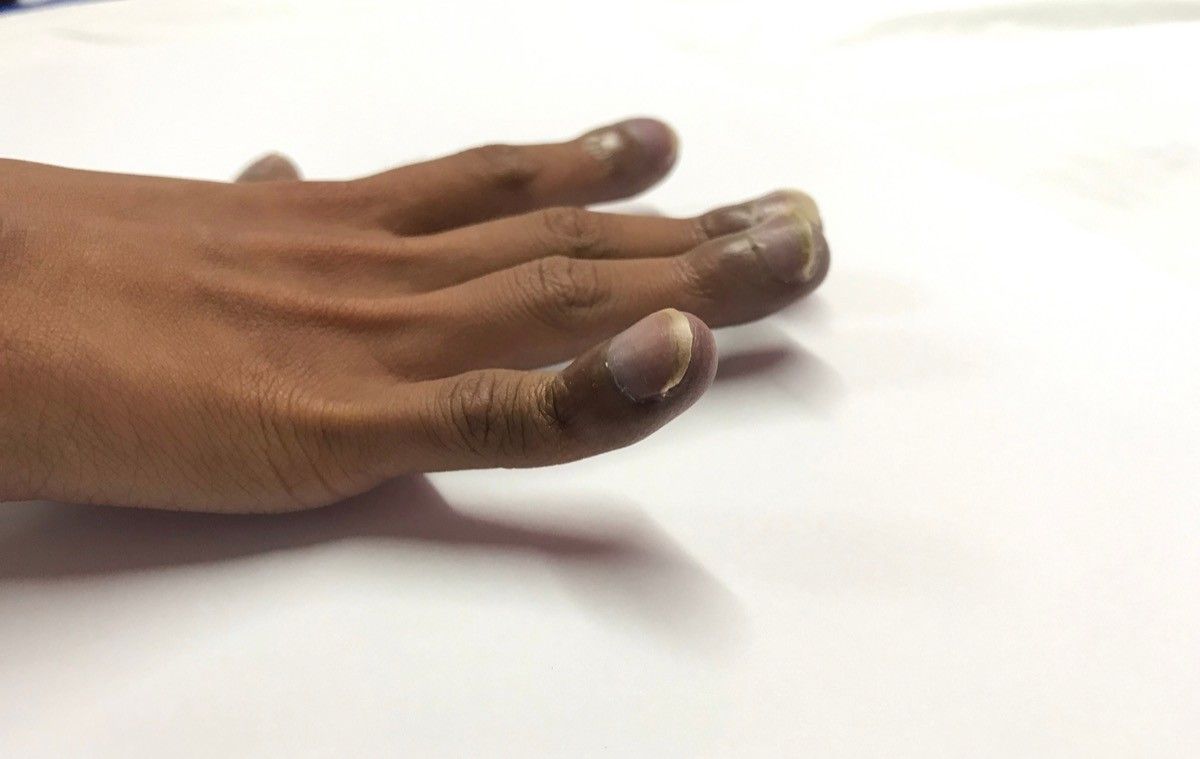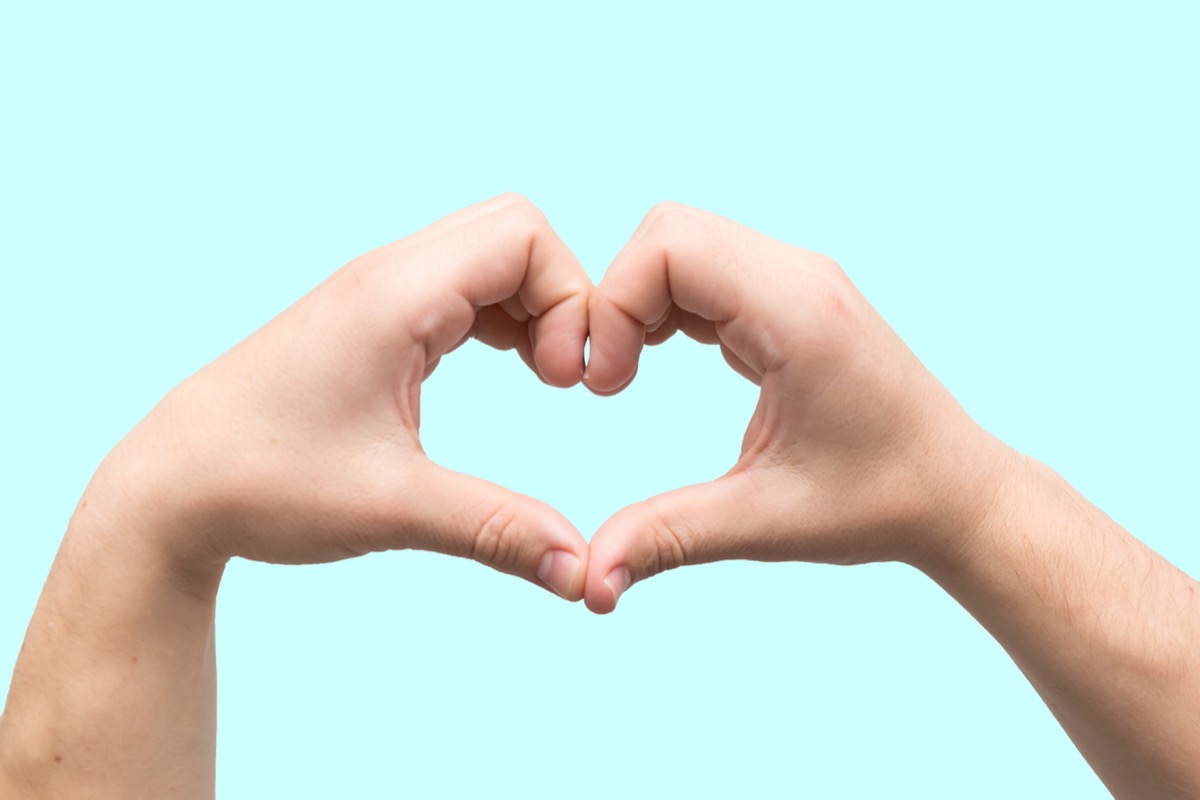Every year, over 230,000 new cases of lung cancer are diagnosed, and 130,000 individuals die from the disease. “Lung cancer is by far the leading cause of cancer death among both men and women, making up almost 25 percent of all cancer deaths,” warns the American Cancer Society. “Each year, more people die of lung cancer than of colon, breast, and prostate cancers combined,” they say.
The good news? Early detection and treatment can significantly enhance your chances of overcoming lung cancer—meaning that knowing what to look out for and getting regular screenings from your doctor can make all the difference. Read on to learn one surprising symptom in the hands which has been “strongly linked” to lung cancer.
RELATED: If You Notice This With Your Eyes, Have Your Lungs Checked, Experts Warn.


Cancer cells—in particular those found in lung tumors—secrete hormones and proteins that can cause blood and fluid to pool in your fingertips. This can cause your fingers to become “clubbed,” making them look larger and more bulbous than normal. WebMD notes that this symptom is “strongly linked to lung cancer: around 80 percent of people who have it also have the disease,” they say. Experts from Mount Sinai say that “lung cancer is the most common cause of clubbing,” and that the symptom “can develop quickly, often within weeks.”
Though this symptom is rare overall, studies have found that finger clubbing is slightly more common in women than in men. However, if you notice the symptom, it’s important to bring it to the attention of your doctor immediately regardless of your sex.
RELATED: If You Do This When You Sleep, Get Checked for Cancer, Experts Say.


Clubbing is a result of having low blood oxygen levels, so various lung disorders can trigger the symptom, Mount Sinai experts say. In particular, this symptom can indicate “lung disorders in which the deep lung tissues become swollen and then scarred (interstitial lung disease),” as well as “chronic lung infections that occur in people with bronchiectasis, cystic fibrosis, or lung abscess.”
Less commonly, certain heart conditions can cause finger clubbing, including infectious endocarditis, an infection of the lining of the heart chambers and valves. In some cases, it can also be a symptom of celiac disease, cirrhosis, dysentery, Graves disease, certain thyroid disorders, and certain other types of cancer, including that of the liver, gastrointestinal tract, or Hodgkin’s lymphoma.


Experts say there’s one way to check for finger clubbing at home—by putting the fingernails of your two pointer fingers together and looking for a diamond-shaped gap between them. If you can’t see a gap, it doesn’t necessarily mean you have clubbing or a serious underlying condition. However, you should still bring it to your doctor’s attention—especially if any additional symptoms are present, or if you have any other signs of clubbing.
Lung cancer survivor Brian Gemmell told the Roy Castle Lung Cancer Foundation that this is how his own cancer was identified. “I was not feeling ill, I was feeling healthy. I had no cough, I wasn’t coughing up blood, I wasn’t breathless. My one and only symptom was clubbing of the fingers, where all your fingers swell up and when you put your fingers together you can’t see a diamond. That was my only symptom. Straight away, my [general practitioner] had an idea of what it was. He sent me straight for a chest X-ray and referred me to a respiratory consultant,” he recalled.
For more health news sent directly to your inbox, sign up for our daily newsletter.


In addition to the bulbous shape of clubbed fingers, you may notice certain other changes in the hands. Mount Sinai experts say that your nail beds may soften or “seem to ‘float’ instead of being firmly attached.” They note that the nails may form a sharper angle with the cuticle, and may curve downward “so it looks like the round part of an upside-down spoon.” Additionally, the finger tip may become red in color, or feel warm.
You may also notice more severe changes if the condition is left unchecked for a long period of time. “In the later stages of finger clubbing, extra areas of bone might form on the finger joints, wrists and ankles. This is sometimes mistaken for arthritis and is called hypertrophic pulmonary osteoarthropathy (HPOA),” writes the British health charity Cancer Research UK.
Speak with your doctor if you notice any signs of finger clubbing, and be sure to discuss any other symptoms you may be experiencing.
RELATED: If These 2 Body Parts Hurt You, It Could Be a Sign of Cancer, Study Says.